 |
Helping Students with ADD Succeed for Paraprofessionals |
1.50 |
Children with Attention Deficit Disorder (ADD) regularly experience struggles and challenges at home, in school, and in the community. Paraprofessionals are in a unique position to make a positive difference in the lives of students with ADD. Armed with important information and management tools, they can help reverse the cycle of failure and frustration that results in low self-esteem in these students. They can make life easier, happier, and more satisfying for students with ADD, their parents, other children in the class, and themselves. |
 |
Culturally Responsive Teaching |
1.00 |
This course covers the concept of culturally responsive teaching. It is just one out of many paraprofessional and teacher courses we offer. This course will help you develop new knowledge about culture and how it impacts student learning. It will teach you strategies on how to include culturally responsive strategies in the classroom and the benefits they have. It will also help you understand what your role might look like in culturally responsive teaching practices. |
 |
Deaf-Blindness and Communication for Paraprofessionals |
1.00 |
This course covers Deaf-Blindness and Communication. It will help you develop new knowledge about deaf-blind students. You will learn what communication systems to use and strategies to implement in the classroom. It will also help you understand your role as a paraprofessional when working with a deaf-blind student. |
 |
Health and Stress Management for Paraprofessionals |
1.00 |
Every day, paraprofessionals dedicate themselves to caring for and nurturing students and families. Often, paraprofessionals are so dedicated to serving others, they neglect their own needs. When this happens, paraprofessionals can experience stress that causes them to become overwhelmed, exhausted, frustrated, dissatisfied with job responsibilities, and unappreciated. When they maintain a healthy, balanced lifestyle, paraprofessionals are in a much better position to face the challenges of supporting and nurturing children and families with positive energy, enthusiasm, patience, and empathy.
By developing self-awareness, linking their personal and professional goals, developing a healthy balanced lifestyle, and identifying and managing stressors effectively, they can create and maintain a positive sense of well-being that allows them to maximize their ability to build positive relationships with students, parents, colleagues, and others. |
 |
Human Relations Skill Development: Leadership Styles and Conflict Management for Paraprofessionals |
1.50 |
Research indicates that those in positions of leadership use a variety of different leadership and management styles. A person’s effectiveness as a leader is often directly linked to their leadership style. It is important for paraprofessionals to be aware of the assumptions and characteristics of different leadership styles. Knowledge of different leadership styles can help paraprofessionals reflect on their own leadership style, and assess its effectiveness. It can also help paraprofessionals take a proactive approach to applying different leadership styles and techniques, depending on the situation.
Leaders also use a variety of different styles when it comes to managing and resolving conflicts. By understanding how to diagnose the causes and dynamics of conflict, and understanding the characteristics of different conflict management styles, paraprofessionals can choose the best conflict management strategy for each situation. |
 |
Creating and Maintaining Healthy and Safe School Environments |
1.00 |
Keeping school-age children healthy and safe is a major priority for schools. This requires careful attention to setting up the environment to promote healthy habits and using effective strategies for monitoring and maintaining a hygienic environment. It also requires setting up the classroom environment to promote safety and using effective strategies for monitoring and maintaining a safe environment. Because students are growing towards independence, it is also essential to help them develop habits and behaviors for living a healthy lifestyle and to help keep them safe from harm as they participate in school experiences. |
 |
Exploring Developmental Needs and Characteristics: Age Group 13 to 17 for Paraprofessionals |
1.50 |
Certain developmental needs and traits are associated with younger school-age children, while others are typical of older school-age children. While the differences between school-age children of different ages are not clear-cut, there are some general traits and tasks that are often associated with older school-age children. This course delves into the specific traits of students between the ages of 13 and 17. |
 |
Multi-Tiered System of Support (MTSS) |
1.00 |
This course covers multi-tiered system of support. Multi-tiered system of support (MTSS) is a framework to give targeted academic, behavioral, and social support to students. This is just one of many K-12 courses we offer. It will help you develop new knowledge about students and will help you understand the various roles in a school. |
 |
Professional Learning and Ethical Practice for Paraprofessionals |
1.00 |
This course covers what paraprofessionals need to know about professional learning and ethical practice. This course will help you develop new knowledge about professional roles and responsibilities as a paraprofessional. It will help you understand what your role as a paraprofessional is regarding certain protocols that you must follow. It is just one out of many paraprofessional courses we offer. |
 |
Assessment for Paraprofessionals |
1.00 |
This course covers what paraprofessionals need to know about assessment. Educators must understand the reasons for assessment and its importance in supporting appropriately designed instruction for students. This course will help you develop new knowledge about students and help you understand your role as a paraprofessional. It is just one of many paraprofessional courses we offer. |
 |
Designing Effective Interest Areas and Learning Environments for K-2 |
1.00 |
In order to operate an effective classroom environment, it is essential for school staff to know how to design, set up, and operate a variety of different interest areas that meet the developmental needs of students. When environments are attractive, interesting, and comfortable, they provide a backdrop for a classroom that can address the developmental needs of students. Effective interest areas are multi-dimensional; they provide a wide variety of activity options within the area. School staff in quality classrooms know how to work with colleagues and children to define, develop, and manage a wide variety of interest areas in a meaningful way. |
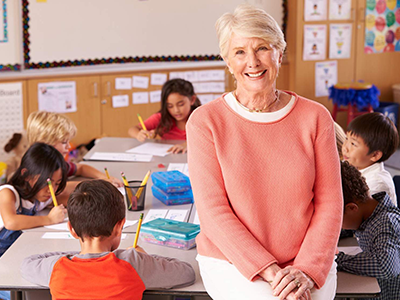 |
Foundational Literacy Strategies for Paraprofessionals |
1.00 |
This course covers foundational literacy strategies for paraprofessionals. It will walk you through different strategies you can use throughout the reading process. The content of this course is divided into three parts: strategies you can use before reading, during reading, and after reading. It is just one out of many paraprofessional courses we offer. This course will help you develop new knowledge about students and will help you better understand your role as a paraprofessional. |
 |
Transition Planning: Preparing Students with IEPs for Life After High School |
1.00 |
This course covers transition planning for paraprofessionals and teachers. Transition planning is a process that supports movement from school to post-school activities for a student with a disability. It’s a set of coordinated activities focused on improving the academic and functional achievement of the student as they move into various post-secondary vocational and educational settings. |
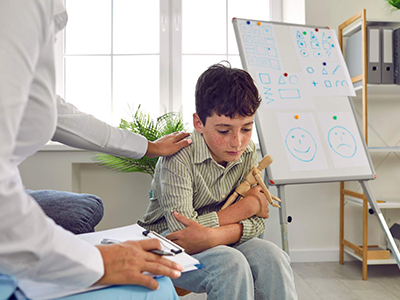 |
Trauma and Its Impact on Education |
1.50 |
Any professional employed in a school must understand the adverse experiences that students have can directly impact their experience in the classroom. This course dives into the definition of trauma, the impact of trauma on the brain, and how trauma can manifest in the classroom. It is important to know how to help students who have experienced trauma in their lives. This course will also touch on the importance of self-care for professionals who work with students who have experienced trauma. This course will help you develop new knowledge about students and help you understand your role as an educational professional.
Trauma and Its Impact on Education is the first course in a series of two trauma courses. After this course, be sure to check out Trauma-Informed Practices. |
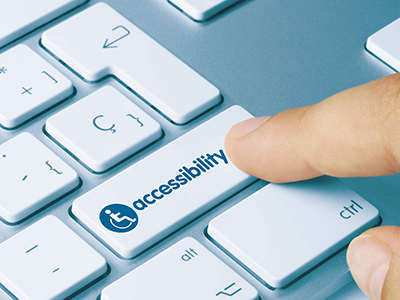 |
Accessible Instructional Materials (AIM) |
1.00 |
Many students with disabilities have difficulty with standard materials, seeing them, manipulating them, or decoding or comprehending them. These students need accessible instructional materials (AIM) in order to access the general education curriculum.
This course is all about accessible instructional materials. This course will help you develop new knowledge about students and will help you understand your role in assisting students that need to use these materials. |
 |
Building Relationships with Students for Paraprofessionals |
1.00 |
For students to learn effectively in school, research shows that they need to have positive relationships with school staff. There are specific characteristics and attributes that paraprofessionals need to build and foster these positive relationships with students. A classroom that fosters positive relationships between students and school staff is critical to developing an effective learning environment. |
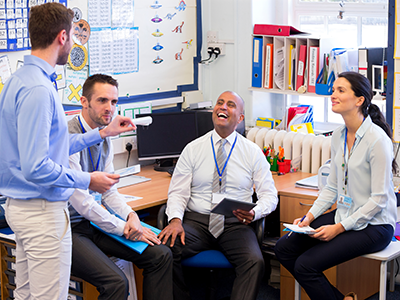 |
Peer Mentoring for K-12 Staff |
1.00 |
School staff are all professionals. As a result, many can benefit from peer mentoring. When mentoring other staff with head and heart, everyone feels respected and valued. It is important to understand when mentoring is appropriate versus coaching, and the qualities of staff that make them a good candidate to receive mentoring or to be a mentor themselves. |
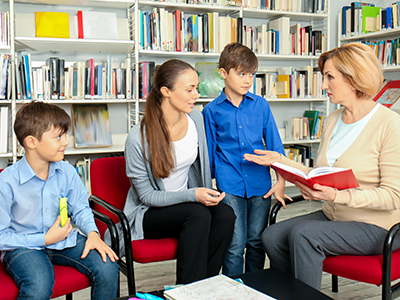 |
Communicating with Families for Paraprofessionals |
1.00 |
Research shows that family involvement in schools can improve family engagement with student learning and develop better relationships between families and children. Another benefit of increased family communication with schools is that it can improve student outcomes, including behavior, health, and school success. Paraprofessionals play a critical role in the communication between schools and parents. To be a good communicator, paraprofessionals need to understand the components of communication, and how the communication process works. |
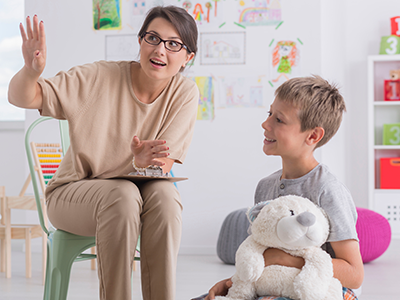 |
Trauma-Informed Practices |
1.00 |
This course contains an overview of trauma: what it is, how to manage it, and what it looks like for students; a list of trauma-informed practices; and ways to ensure that you are implementing data-driven trauma-informed practices.
Trauma-Informed Practices is just one out of two courses in our trauma series. Be sure to check out the other course, Trauma and Its Impact on Education. |
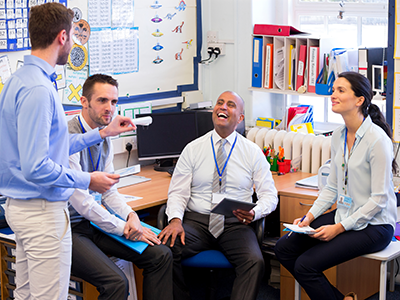 |
Collaboration with Team Members for Paraprofessionals |
1.00 |
This course covers collaboration with team members for paraprofessionals. You will learn what collaboration looks like in the school setting and what it means to use effective collaboration strategies. This course will also dive into what it means to be an effective communicator in the professional setting. |
 |
Remote Learning in a Tiered Behavior Framework |
1.00 |
This course covers implementing strategies for remote learning in a tiered behavior framework. A different setting for learning requires adaptations to instruction, engagement, and response to students. School and family partnerships lay the foundation for supporting students in a Multi-Tiered System of Support (MTSS). |
 |
Social, Emotional, and Behavioral Supports for Paraprofessionals |
1.00 |
This course explores how to support students emotionally, socially, and behaviorally. It is important to understand the value of building rapport with students to promote resilience. Additionally, this course will explore the components of student behavior, how to identify the function of behavior, and how to create a supportive environment for students. This course will help you develop new knowledge about students and will help you understand what your role as a paraprofessional is. |
 |
STEM (Science, Technology, Engineering, Math) in K-12 |
1.50 |
This course provides comprehensive training on STEM education in the K-12 setting. This course will discuss the key standards for students to find success in the four domains of STEM: science, technology, engineering, and mathematics. You will then learn about supportive strategies to help students to excel in those standard areas within each domain. It is just one out of many educational courses we offer. This course will help you develop new knowledge about students and will help you understand your role as an educator. |
 |
Para-Educator Teaching Team |
1.50 |
This course is designed for both paraprofessionals and teachers. Throughout this course, you will acquire the skills and knowledge necessary to foster a collaborative environment that enhances the learning experience for your students. The goal of this course is to ensure every child is supported by a cohesive team of professionals striving to help the child find success in their education. This course will help you develop new knowledge about your student's team members and will help you understand what your role as a paraprofessional or teacher is. |
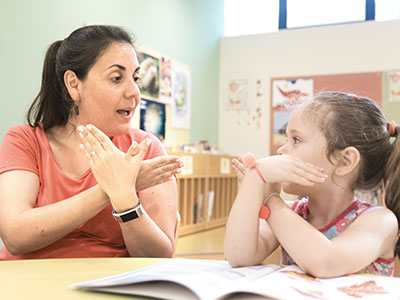 |
Introduction to American Sign Language |
0.50 |
This course covers basic American Sign Language also known as ASL. This course will help you develop new knowledge about what American Sign Language is, where it comes from, and who benefits from it. You will also learn how ASL is used and some common signs for the classroom. |


























